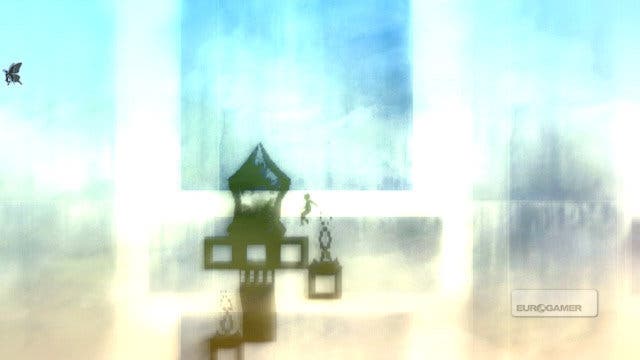Games of 2010: A Shadow's Tale
Silent to the dark.
Games of the quality of A Shadow's Tale used to fall through the cracks all the time. We used to get all indignant and shouty about publisher indifference to games like Katamari Damacy, Sly Raccoon and Psychonauts and then promptly dish out game of the year awards to make up for the rank injustice. It probably didn't make a lot of difference in the grand scheme of things, but it made us (and the 147 people who bought them) feel a bit better.
Now that we've got downloadable outlets practically coming out of our own faces, we don't tend to get hung up about these things anymore. More likely, we'll just spend hours poring over obscure forums, check out a few hastily cobbled together promo videos, and hassle hard-up developers for code. The best of the bunch end up featuring in one of EG's excitable weekly roundups of downloadable and mobile titles, and we all go to bed happy that no-one's being ignored, no matter how left-field or downright weird they decide to be.
A Shadow's Tale certainly fell through the cracks - although even the most deluded optimist would have known it didn't stand a chance had they taken a look at the game's European packaging. "Embark on a shadow's adventure!" we're told, before four amazing bullet points. "Journey through a land in shadow!" We got that bit. "Adventure with a Spangle!" What."

"Manipulate light!" Okay, that sounds sort of interesting. "Complete your quest." Amazing. Needless to say, if you were one of the seven people in the UK who idly picked up a copy and then put it down again, you'd have walked away none the wiser - perhaps guessing that it was some sort of ICO clone, judging by the rather knowing cover art.
In fact, the game itself starts off determined to hoodwink players into believing that it's spiritually aligned with Fumito Ueda's ethereal classic. On the surface, at least, such observations are on the money. Young boy? Check. Lost and abandoned? Check. In a mistily over-saturated world of sandstone? Ding ding ding! Coincidence? Hardly.
But once you progress beyond the derivative introductory level, the game carves out its own identity, with an ambience more pulse-quickeningly sinister than even Limbo. Stripped of your physical form, you find yourself occupying a dangerous shadowy afterlife, skipping along the outlines of the real world and clambering along makeshift obstacles in search of the three glowing red 'Monitor Eyes' that occupy each level.
The further you journey up the game's vast, imposing tower in search of the precious fragments of your physical being, the more twisted and deranged it appears determined to become. The game's patrolling sentries look like nothing more sinister than the creepy, spidery relatives of Patapon to start with, but later on they take on disturbing, miserablist forms, and the game goes from being a pleasant platform diversion to a cracked cousin of survival-horror in one swift motion. Rarely does it ever feel like letting you off the hook.

